Cisco SPA-1XOC3-ATM-V2 Handleiding
Cisco
Niet gecategoriseerd
SPA-1XOC3-ATM-V2
Bekijk gratis de handleiding van Cisco SPA-1XOC3-ATM-V2 (8 pagina’s), behorend tot de categorie Niet gecategoriseerd. Deze gids werd als nuttig beoordeeld door 63 mensen en kreeg gemiddeld 4.3 sterren uit 32 reviews. Heb je een vraag over Cisco SPA-1XOC3-ATM-V2 of wil je andere gebruikers van dit product iets vragen? Stel een vraag
Pagina 1/8

Data Sheet
© 2016 Cisco and/or its affiliates. All rights reserved. This document is Cisco Public Information. 1 of Page
Cisco Shared Port Adapters/SPA Interface Processors
Cisco 1-Port OC-3c/STM-1c ATM SPA, 3-Port OC-3c/STM-1c ATM
SPA, and 1-Port OC-12c/STM-4c ATM SPA
The extensible Cisco® I-Flex design combines shared port adapters (SPAs) and SPA interface processors (SIPs),
enabling service prioritization for data, voice, and video services. Enterprise and service provider customers can take
advantage of improved slot economics resulting from modular port adapters that are interchangeable across Cisco
routing platforms. The I-Flex design maximizes connectivity options and offers superior service intelligence through
programmable interface processors that deliver line-rate performance.
I-Flex enhances speed- -service revenue and provides a rich set of quality- -service (QoS) features for premium to of
service delivery while effectively reducing the overall cost of ownership. This data sheet contains the specifications
for the Cisco 1-Port and 3-Port OC-3c/STM-1c ATM, and Cisco 1-Port OC-12c/STM-4c ATM Shared Port Adapters
(refer to Figure 1).
Figure 1. Cisco 1-Port OC-3 ATM SPA, 3-Port OC-3 ATM SPA, and 1-Port OC-12 ATM SPA
Product Overview
This data sheet details the features of the new modular ATM SPAs for Cisco XR 12000 Series Routers, the Cisco
CRS-1 Carrier Routing System and the Cisco ASR 1000 Series. The Cisco ATM SPAs, in conjunction with other
SPAs implementing various types of network technologies, allow the user to flexibly build cost-effective routing
solutions focusing on point- -presence (POP) edge, customer premises equipment (CPE), and enterprise of
applications.
Designed for all telcos and Internet service providers (ISPs), the Cisco ATM SPAs support a variety of port choices
and granularity, including OC-3c/STM-1c and OC-12c/STM-4c interfaces for worldwide use. These modules are
designed to support the convergence of data, voice, and video services, allowing customers to migrate existing voice
and video traffic onto a corporate data network for substantial cost savings.
The Cisco ATM SPAs include a comprehensive ATM feature set including per-virtual-circuit and per-virtual-path traffic
shaping, ATM service classes including constant bit rate (CBR), variable bit rate non-real time (VBR-nrt), variable bit
rate real time (VBR- ), unspecified bit rate (UBR), Multiprotocol Label Switching (MPLS), QoS, a high-performance rt
segmentation- -reassembly (SAR) architecture, and support for a large number of ATM virtual connections. All and
these features are based on industry specifications and standards. In conjunction with the SIPs, the Cisco ATM SPAs
continue to deliver new features made possible by industry-leading Cisco IOS
® Software protocols, services, and an
ATM-rich feature set.

Data Sheet
© 2016 Cisco and/or its affiliates. All rights reserved. This document is Cisco Public Information. 2 of 8Page
The Cisco ATM SPAs address the growing demand for improved ATM QoS features, which are combined with the
advanced Layer 3 class- -service (CoS) capabilities provided by various Cisco routers. Robust QoS mechanisms of
help prioritize traffic from traditional and high-speed LANs over an ATM network. Network managers can now cost-
effectively terminate high-speed ATM, enabling rich QoS features for aggregation or campus applications.
The Cisco ATM SPAs can be inserted in the Cisco SIPs that support various edge services such as:
● IPv4, IPv6, and MPLS hardware-assisted forwarding
● Enhanced security features such as extended access control lists (ACLs), Unicast Return Path Forwarding
(URPF), Internet Control Message Protocol (ICMP) rate limiting, and others
● Extensive QoS implementation based on either "classical" QoS (three type- -service [ToS] bits), of
Differentiated Services (DiffServ [six DiffServe code point (DSCP) bits]), or MPLS (3 bits EXP)
● Enhanced NetFlow, statistics, and billing data to allow service providers to generate different billing profiles for
their customers
● MPLS-VPN support that allows for Layer 3 VPN deployments and various related applications
● Any Transport over MPLS (AtoM) or pseudowire edge- -edge emulation 3 (PWE3) support for transport to
solutions
The Cisco ATM SPAs use replaceable Small Form-Factor Pluggable (SFP) optical modules that allow customers the
flexibility to use different optical interfaces on the same SPA. The Cisco ATM SPAs are hot-swappable and support
service-transparent online insertion and removal (OIR), allowing removal of the SPA without impacting the interface
processor and other SPAs.
Applications
The Cisco ATM SPAs are designed for a wide range of network applications. The specific combination of ATM
features and standards makes the Cisco ATM SPAs ideal for both enterprise-based ATM WANs and service provider
infrastructures.
Enterprise-Based ATM WAN
ATM technology is now a favored choice for very high-bandwidth corporate connectivity across an enterprise WAN.
Providing connectivity to geographically dispersed facilities, typical ATM WAN interfaces range from 34 to 622 Mbps.
These very large WAN pipes supply ample bandwidth for the needs of corporate infrastructures today, with room for “ ”
growth in the future. Enterprise-based ATM WANs can be deployed through private networks or through a public
ATM service from large service providers.
With the many advanced ATM capabilities and support for MPLS and QoS (such as per-virtual-circuit and per-virtual-
path traffic shaping), the Cisco ATM SPAs are ideal for interconnecting Cisco XR 12000/CRS-1 Carrier Routing
System at central sites or larger remote sites through an enterprise-based ATM WAN. The Cisco ASR 1000 Series
can be deployed for WAN aggregation of branch offices. Through OC-3c/STM-1c or OC-12c/STM-4c ATM links, the
Cisco ATM SPAs can be connected to any standards-based ATM WAN switch, including the Cisco LightStream
®
1010, Cisco Catalyst® 8500 Series, Cisco MGX® 8800 Series, Cisco BPX 8600 Series, and Cisco IGX 8400 Series at
the switching core.
In the campus backbone or metropolitan-area network (MAN), the OC-12c/STM-4c provides the same scaled-up
ATM bandwidth as in the POP when the bandwidth between the ATM switches is increased.
The Cisco ATM SPAs allow you to combine a diverse range of LAN technologies, including Fast Ethernet and Gigabit
Ethernet, with ATM in enterprise deployments.

Data Sheet
© 2016 Cisco and/or its affiliates. All rights reserved. This document is Cisco Public Information. 3 of 8Page
Service Provider Infrastructures
ATM deployment in service provider infrastructures has seen tremendous growth in recent years as well. This growth
has been spurred for several reasons:
● ATM provides highly scalable bandwidth within SONET/SDH infrastructures.
● ATM is inherently a multiservice (data, voice, and video) technology.
● ATM is based on international standards.
The Cisco ATM SPAs provide high-performance interconnectivity for service provider intra-POP applications needing
IP transport. Cisco ATM SPAs can also be used for ATM aggregation of remotes sites at the edge of the service
provider networks.
Because they support ATM Forum specifications and IETF and ITU standards, the Cisco ATM SPAs can be deployed
with any standards-based ATM switch, including the Cisco MGX 8800 Series, Cisco BPX 8600 Series, Cisco IGX
8400 Series, Cisco LightStream 1010, and Cisco Catalyst 8500 Series products.
The Cisco ATM SPAs in conjunction with the Cisco SIPs allow service providers to effectively manage the bandwidth
at the edges of the network while implementing value-added Layer 3 services. With advanced traffic-shaping features
and support for many ATM service classes, the Cisco ATM SPAs can be widely deployed in many parts of the service
provider backbone. Advanced traffic-management features (such as per-virtual-circuit and per-virtual-path traffic
shaping) are required to prevent traffic from one customer impacting traffic of another.
Layer 2 Transport Services
In order to cost-effectively deliver new revenue-generating connectivity options to their customer base, traditional
ATM and Frame Relay service providers (telcos, regional Bell operating companies [RBOCs], and incumbent local
exchange carriers [ILECs]) are migrating services from cell-based ATM transport networks to packet-based MPLS/IP
networks. This migration allows them to deliver the rich functionality of services associated with Layer 3 while gaining
the ability to account for, prioritize, and effectively offer these services for profit.
Using the Cisco ATM SPAs in conjunction with the Cisco SIPs, by tunneling core ATM trunks through an MPLS/IP
network, you can take advantage of your existing investment in IP networks networks that are currently low-–
revenue-generating and, in essence, enable those networks to mimic and build upon the class- -service (CoS) –of
abilities of current Frame Relay- and ATM-based networks, all while maintaining continuity of Layer 2 services.
Features and Benefits
The ATM SPAs offer many advantages, including support for the following features:
● Per-virtual-circuit and per-virtual-path traffic shaping: Traffic shaping is a function typically provided on ATM
edge devices to ensure that bursty traffic conforms to a predetermined “contract.” To implement traffic
shaping, the Cisco ATM SPAs support per-virtual-circuit and per-virtual-path shaping, including industry-
leading minimum 1-kbps granularity, allowing flexibility and control over every virtual circuit and virtual path
configured.
● IP QoS and Layer 3 QoS features: The Cisco SIPs and ATM SPAs support per-virtual-circuit IP QoS features
that allow you to apply advanced-queuing and bandwidth-management functions, including Low Latency
Queuing (LLQ), to individual virtual circuits to avoid congestion and delay. In addition, extended ACLs and
committed access rate (CAR) are supported on a per-virtual-circuit basis on both ingress and egress.
● IP/MPLS- -ATM QoS mapping: Also supported is IP- -ATM QoS setting through cell-loss priority (CLP) bit to to
support and virtual circuit bundling, which allows you to divide traffic on different virtual circuits, depending on
the desired CoS.
Product specificaties
| Merk: | Cisco |
| Categorie: | Niet gecategoriseerd |
| Model: | SPA-1XOC3-ATM-V2 |
| Gewicht: | 431 g |
| Temperatuur bij opslag: | -40 - 70 °C |
| Luchtvochtigheid bij opslag: | 5 - 95 procent |
| Elektromagnetische compatibiliteit: | EMC Class A or B conforms with Host System Classification, FCC Part 15 (CFR 47), ICES 003, EN55022, CISPR 22, AS/NZ CISPR 22, VCCI, EN55024, EN50082-1, EN61000-6-1, EN61000-3-2, EN61000-3-3 |
| Veiligheid: | UL 60950, CSA 22.2 No.60950, IEC 60950, EN 60950, AS/NZS 3260, TS001 |
| Compatibiliteit: | Cisco XR 12000\nCisco ASR 1000\nCisco CRS\nCisco 7600\nCisco ASR 9000 |
| Quality of Service (QoS): | Ja |
| Access Control List (ACL): | Ja |
| Afmetingen (B x D x H): | 171.5 x 184.9 x 20.3 mm |
| Beheerplatform: | SNMP |
| Bedrijfstemperatuur (T-T): | 5 - 40 °C |
| Relatieve vochtigheid in bedrijf (V-V): | 5 - 85 procent |
| MIB-ondersteuning: | RFC 2558 MIB (SONET/SDH) |
| Ondersteunende gedeelde port adapters (SPA): | ATM |
| SIP online invoegen en verwijderen (OIR): | Ja |
Heb je hulp nodig?
Als je hulp nodig hebt met Cisco SPA-1XOC3-ATM-V2 stel dan hieronder een vraag en andere gebruikers zullen je antwoorden
Handleiding Niet gecategoriseerd Cisco

4 Juni 2025

29 Maart 2025

5 Augustus 2024

29 Mei 2023

7 Mei 2023

4 Mei 2023

1 Mei 2023

27 April 2023

27 April 2023

20 April 2023
Handleiding Niet gecategoriseerd
- Fusion
- TeachLogic
- Sanus Systems
- Libec
- FIAP
- Einhell
- Audix
- Landmann
- Flir
- Connect IT
- Gabor
- Crimson
- CreativeWorKs
- Envivo
- Minox
Nieuwste handleidingen voor Niet gecategoriseerd
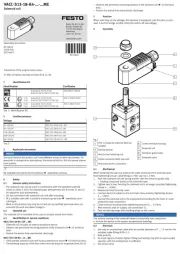
1 Augustus 2025
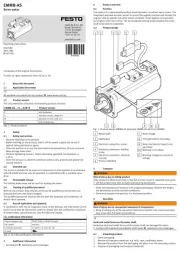
1 Augustus 2025
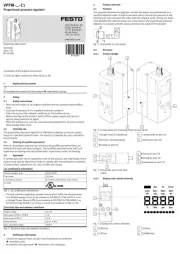
1 Augustus 2025
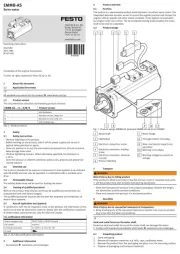
1 Augustus 2025
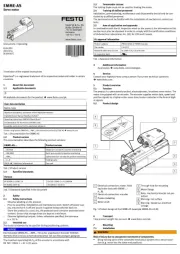
1 Augustus 2025
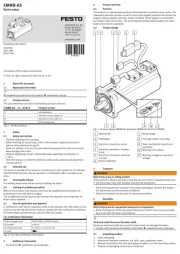
1 Augustus 2025
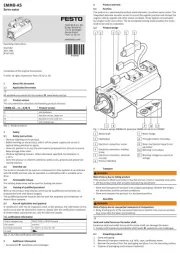
1 Augustus 2025
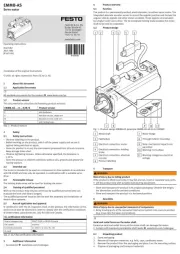
1 Augustus 2025
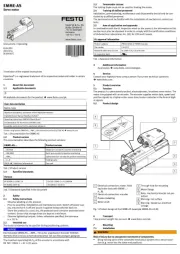
1 Augustus 2025

1 Augustus 2025